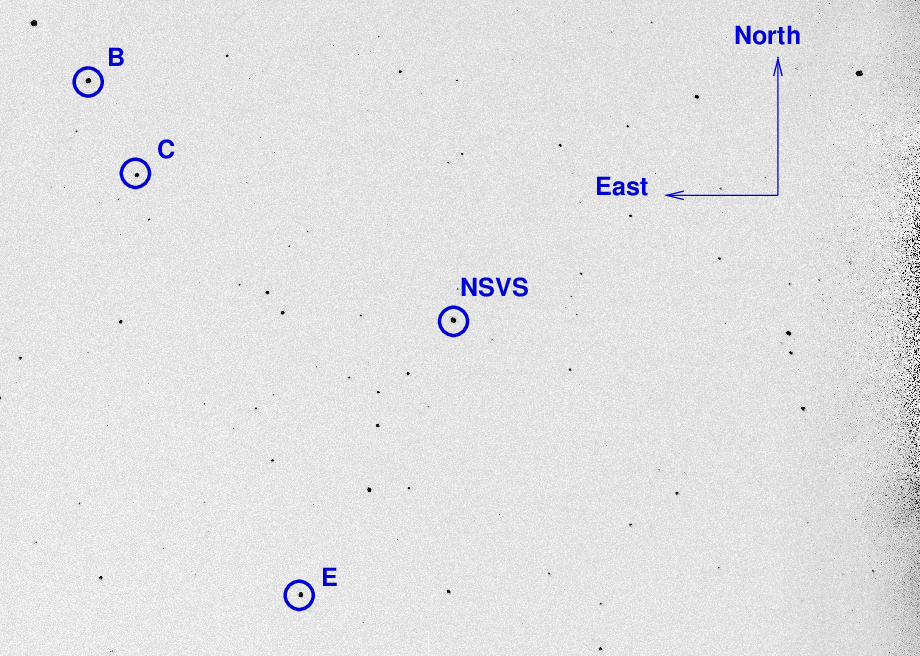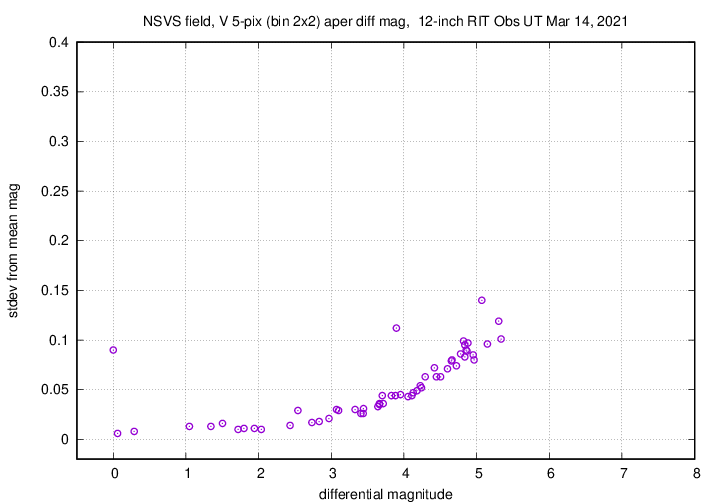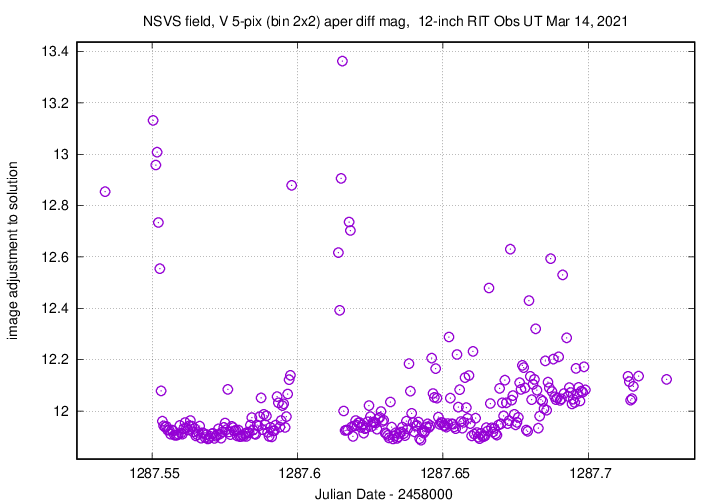
On the night of Mar 13/14, 2021, under good-to-bad conditions, RIT physics major Andrew Nietopski and I acquired images of a new target: NSVS 2569022, an eclipsing binary star with a small mass ratio. One can find information about it at
These are the first measurements of this system from RIT.
This object is the target of a capstone project by Physics major Andrew Nietopski. It is a cataclysmic variable star first described in 2006 by Gettel, Geski, and McCay, which has a rather small mass ratio of 0.077.
The main setup was:
Notes from the night:
The object is located at
RA = 10 10 42.68 Dec = +67 39 31.7 (J2000)
A chart of the field is shown below. The size of the chart is about 31 x 26 arcminutes.

I've marked the location of several comparison stars as well.
star AAVSO B V ----------------------------------------------------------- A APASS 7227589 12.531 11.510 -----------------------------------------------------------
The sky value shows the two short periods of cloud, followed by thick clouds at the end.

The FWHM increased steadily as the temperature dropped.

Using aperture photometry with a radius of 5 pixels in a V filter (binned 2x2, each pixel is 1.24 arcsec, so a radius of 6.2 arcsec), I measured the instrumental magnitudes of a number of reference stars and the target. Following the procedures outlined by Kent Honeycutt's article on inhomogeneous ensemble photometry, I used all stars available in each image to define a reference frame, and measured each star against this frame.
Sigma-vs-mag plots show that the floor was about 0.007 mag with a 30-second exposures.

Clouds moved through the sky during the observations, as these image-to-image zero-point adjustments make clear.

Here is the light curve of the object and several field stars in the V filter; I've shifted the instrumental magnitudes so that star "E" = APASS 7227589 has the value given by APASS as its V-band magnitude.


Last modified 3/14/2021 by MWR.